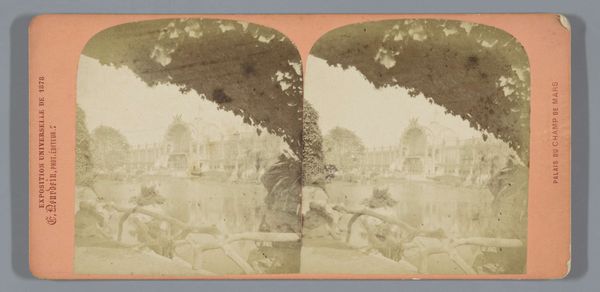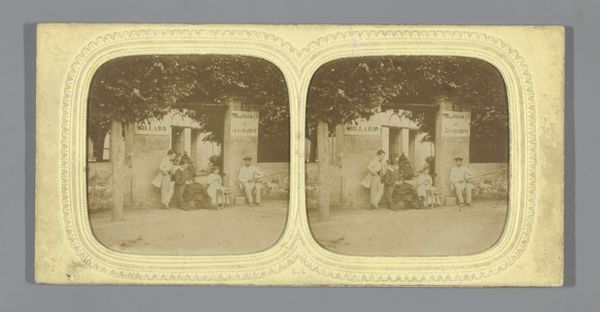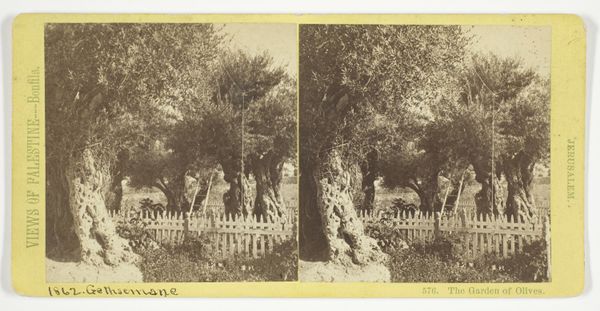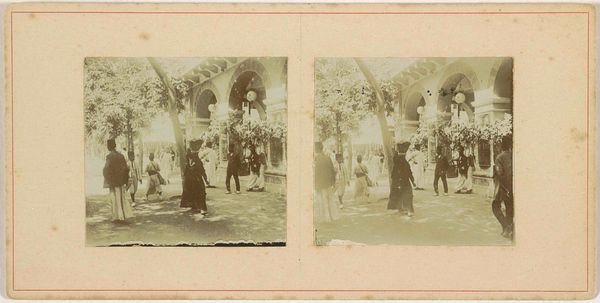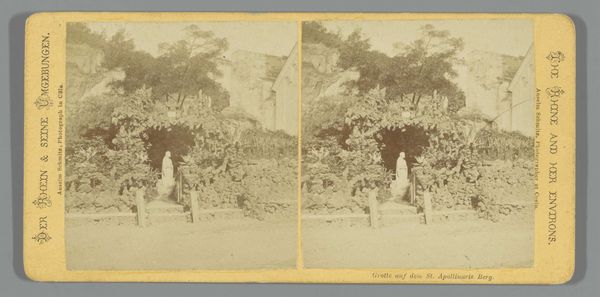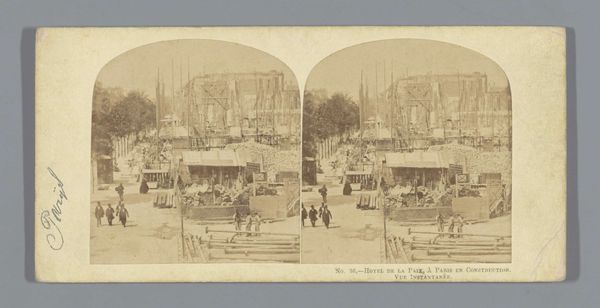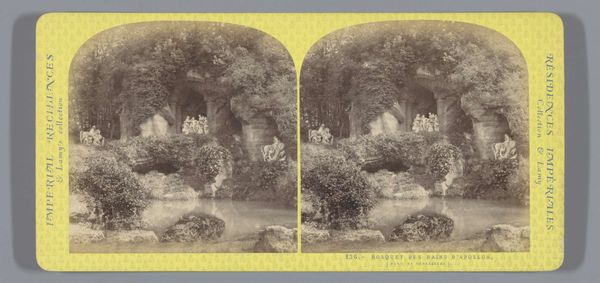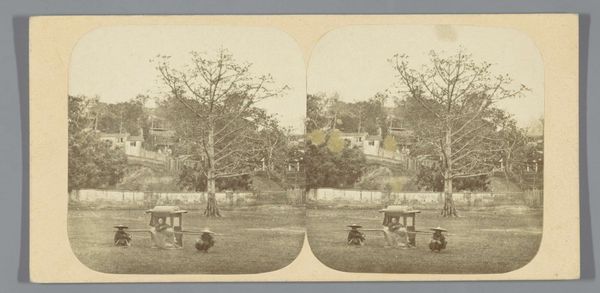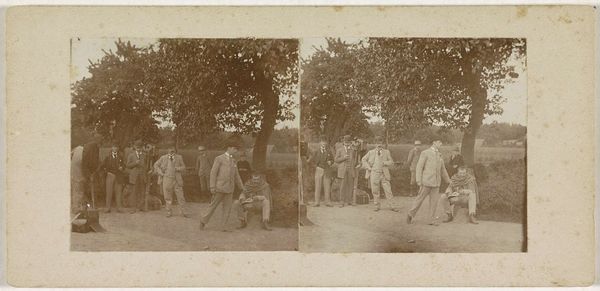
Kunstmatige grot bij het Palais du Champ de Mars op de Wereldtentoonstelling van 1878 1878
0:00
0:00
adolpheblock
Rijksmuseum
photography, albumen-print
#
water colours
#
impressionism
#
landscape
#
photography
#
coloured pencil
#
watercolor
#
albumen-print
Dimensions: height 87 mm, width 176 mm
Copyright: Rijks Museum: Open Domain
Curator: It has such a strangely appealing washed-out sepia tone. Like faded memory trying to convince you of its realness. Editor: This albumen print captures the artificial grotto at the Palais du Champ de Mars during the 1878 World's Fair in Paris, photographed by Adolphe Block. The world’s fair emerged at a crucial juncture in our ongoing negotiation of modernity. Curator: Artificial, you say? It really does appear to be something imagined, not necessarily a reproduction. A sort of idealized nature. I am captivated by the light glinting on what looks like the water's surface. Editor: The fair was about showcasing progress—and defining its terms. These sorts of artificial environments speak to the way humans want to assert dominion over nature itself, creating curated experiences. Notice the figures included – how do they engage with that dominion? Curator: I do. It is odd—they’re posed very still, adding to that sense of constructed reality. Makes me think of stage actors amidst cardboard trees! Editor: Exactly, there's a distinct tension there. Block highlights how artifice and nature were carefully intertwined, shaping narratives of progress for consumption on a global stage, including colonialism. Curator: A little ominous, almost. Considering all the global machinations churning beneath the surface of that fair… What do you mean by this? Editor: The late 19th century saw many colonised people displayed as though they were objects or belonged to the environment displayed as part of human zoos, which are directly linked to the concept of "universal exhibitions". They used to reaffirm ideologies of race, progress, and western hegemony and that is displayed even in something as harmless as it looks. Curator: Well. Now when I gaze into its depths, that perfectly still water suddenly seems like it might hide something deeper. Editor: It probably does. This image speaks to that era's desire to order and control the natural world, but also reflects the troubling undercurrents of social and political control inherent to that very drive. Curator: You've made me completely rethink this piece. I came for the aesthetics, but now I’m staying for the story. Editor: All art has stories to tell. We only have to learn to listen with a more critical ear.
Comments
No comments
Be the first to comment and join the conversation on the ultimate creative platform.
